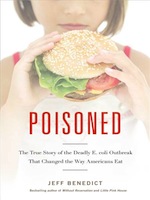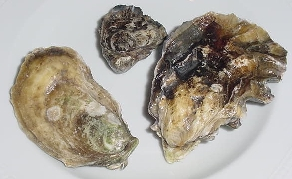Poisoned: The True Story of the Deadly E. Coli Outbreak That Changed the Way Americans Eat by Jeff Benedict
When six-year-old Lauren Rudolph was rushed to the hospital with severe abdominal pain, bloody diarrhea, and fever, doctors were mystified as to the cause of her sudden and terrifying symptoms. Just five days later Lauren would become the first victim of a mysterious bacterial pathogen. Hundreds of sick children began to show up at hospitals across the Western states, three more children died. After frantic research, health officials managed to trace the deadly outbreak to a single source: undercooked hamburgers eaten at the popular fast-food chain Jack in the Box.




